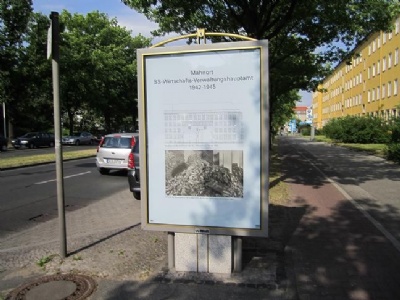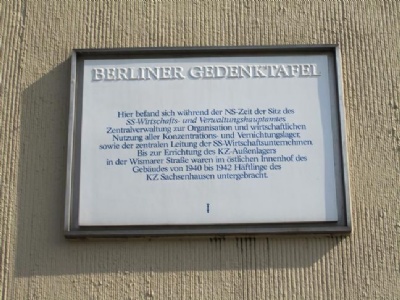Berlin – SS WVHA
At Unter den Eichen 135 in western Berlin, SS – Wirtschafts Verwaltungshauptamt (SS Economical Department) had its headquarters. SS-WVHA was formed in March 1942 to administer and monitor the SS’s financial interests. For the SS, the concentration camps were a major source of economic income. Not only did the SS seize the prisoners’ money and possessions, but the SS also leased prisoners to industries set up near the concentration camps. The SS also ran several industries and the products that were manufactured were later sold primarily to the armed forces. For this reason, the concentration camps were located within the WVHA. Thus, the WVHA became directly involved and responsible for the destruction of the Jews. WVHA had no direct influence on the pure extermination camps. The head of the SS-WVHA was SS-Obergruppenführer Oswald Pohl and he worked closely with the German Reichbank where the stolen money was deposited. SS-WVHA consisted of the following departments.
A – Troop Administration (SS Brigadeführer Frank)
B – Troop Economy (SS Brigadeführer Lärner)
C – Building project (SS-Obergruppenführer Kammler)
It was this department that was responsible for the construction of the Auschwitz gas chamber and crematorium
D – Concentration camp (SS-Brigadeführer Richard Glücks)
Dep. A – Administration (SS-Obersturmbannführer Liebehenschel)
Dep. B – Work organisation (SS-Sturmbannführer Maurer)
Dep. C – Sanitation and camp hygiene (SS-Obersturmbannführer Enno Lolling)
Dep. D – KL management (SS-Obersturmbannführer Kaindl)
Dep. W – Economy (SS-Obergruppenführer Oswald Pohl)
Department W was perhaps the most important of all the departments because they were responsible for the establishment of war industries and the hiring of prisoners to war-producing industries. They were also responsible for the SS turning its economy into a ear-marked war economy.
Current status: Preserved with information board (2011).
Address: Unter den Eichen 135, 12203 Berlin.
Get there: Metro to Rathaus Steglitz Station.
Follow up in books: Broszat, Martin, and others: The Anatomy of the SS state (1972).



WVHA was often in conflict with RSHA where the former wanted to exploit the Jews as slave workers. Partly in their own industries and partly by hiring out the Jews as cheap labor to other industries while RSHA (and rabid nazis) wanted to murder the jews. The Jews were not just a source of income for the WVHA, they also came to be an important resource for the German war industry in the final years of the war. They simply replaced the workforce that had been draft into military service. Paradoxically, this meant that it was in the interest of the Nazis to keep the Jews alive, albeit only temporarily.